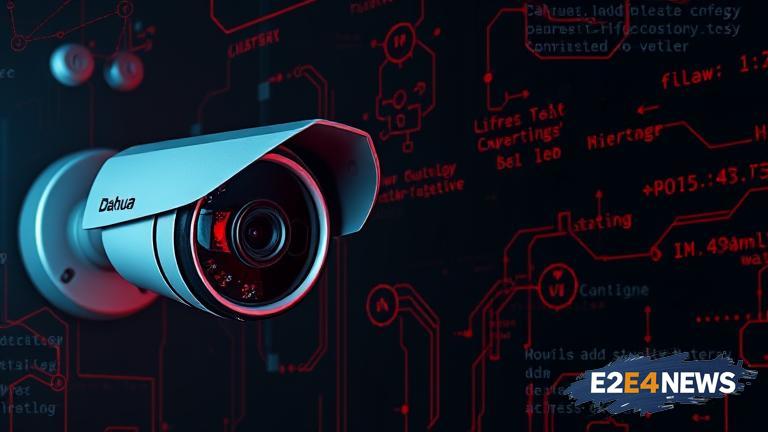A recent security audit has revealed critical vulnerabilities in Dahua security cameras, which are widely used in various settings, including homes, businesses, and government institutions. The flaws, which include buffer overflow and command injection vulnerabilities, can be exploited by attackers to gain unauthorized access to the cameras, allowing them to spy on users, steal sensitive information, and even disrupt the camera’s functionality. The vulnerabilities were discovered by a team of security researchers who conducted a thorough analysis of the camera’s firmware and software. The researchers found that the vulnerabilities can be exploited remotely, without the need for physical access to the camera. This means that attackers can potentially access the camera’s feed, audio, and other sensitive information from anywhere in the world. The vulnerabilities also pose a significant risk to the security of the camera’s users, as attackers can use the camera as a pivot point to gain access to other devices on the network. The researchers have warned that the vulnerabilities can be exploited using publicly available tools and techniques, making it easy for attackers to launch attacks. The vulnerabilities have been classified as critical, with a CVSS score of 9.8, indicating a high level of severity. The researchers have recommended that users of Dahua security cameras take immediate action to mitigate the vulnerabilities, including updating the camera’s firmware and software to the latest version. Users are also advised to change the default passwords and usernames, and to enable WPA2 encryption to prevent unauthorized access. The vulnerabilities have raised concerns about the security of IoT devices, which are increasingly being used in various settings. The incident highlights the need for manufacturers to prioritize security and conduct regular security audits to identify and fix vulnerabilities. The vulnerabilities have also raised questions about the responsibility of manufacturers to ensure the security of their products, and the need for regulatory bodies to establish stricter security standards for IoT devices. The incident is a reminder that security cameras, which are designed to provide security and surveillance, can themselves be vulnerable to attacks. The vulnerabilities have significant implications for users, who may be unaware of the risks associated with their security cameras. The incident highlights the need for users to be aware of the potential risks associated with their devices and to take steps to mitigate them. The vulnerabilities have been reported to Dahua, which has released a patch to fix the vulnerabilities. However, the researchers have warned that the patch may not be effective in all cases, and that users should take additional steps to secure their cameras. The incident is a wake-up call for the security industry, which needs to prioritize security and take steps to prevent similar vulnerabilities in the future. The vulnerabilities have significant implications for the future of IoT security, and highlight the need for a more comprehensive approach to security. The incident is a reminder that security is a shared responsibility, and that manufacturers, users, and regulatory bodies all have a role to play in ensuring the security of IoT devices.





